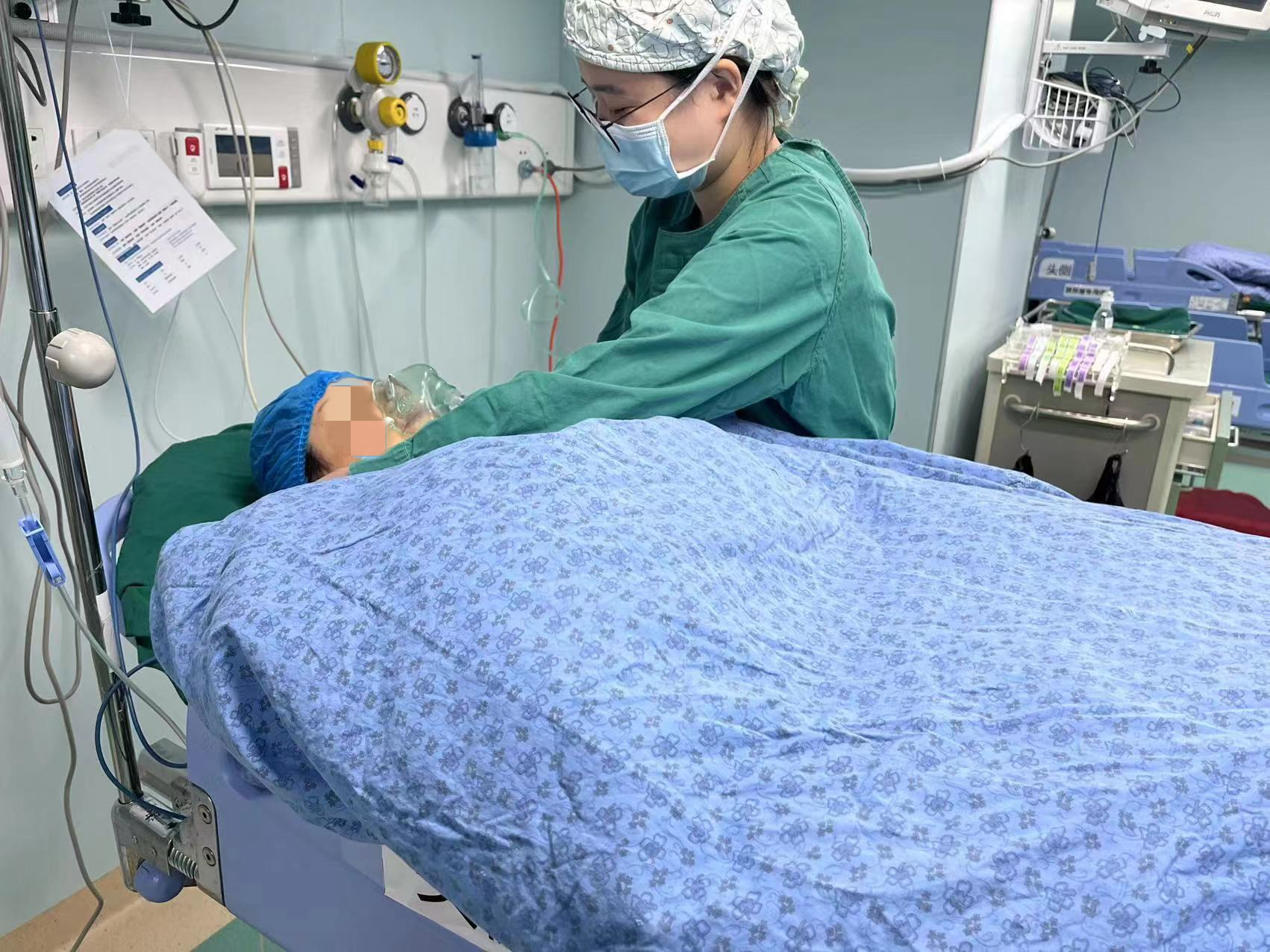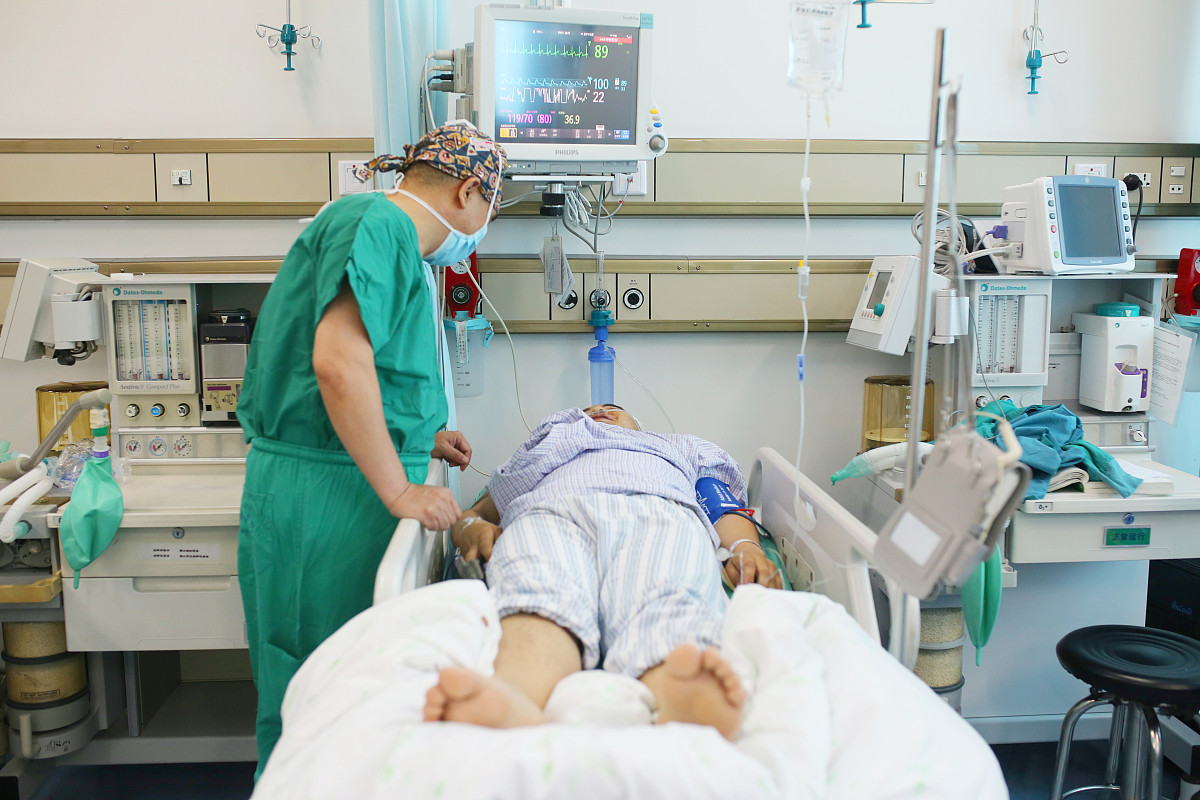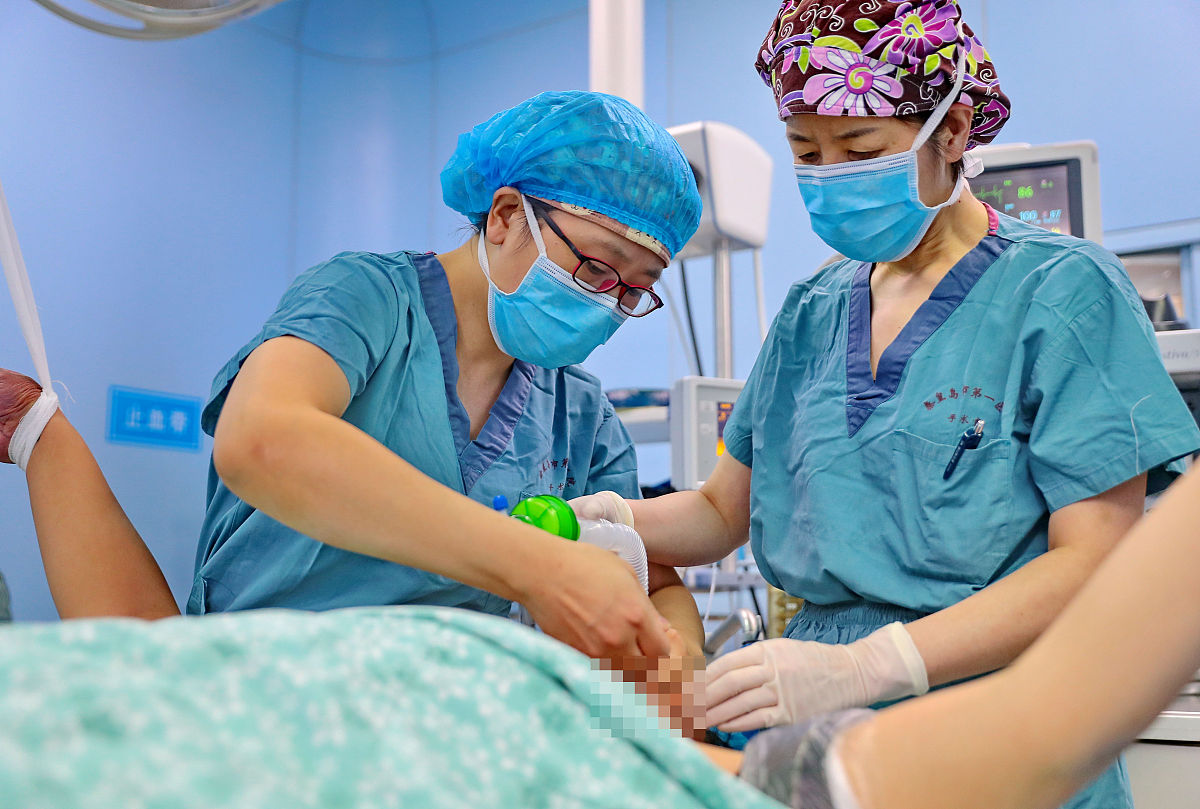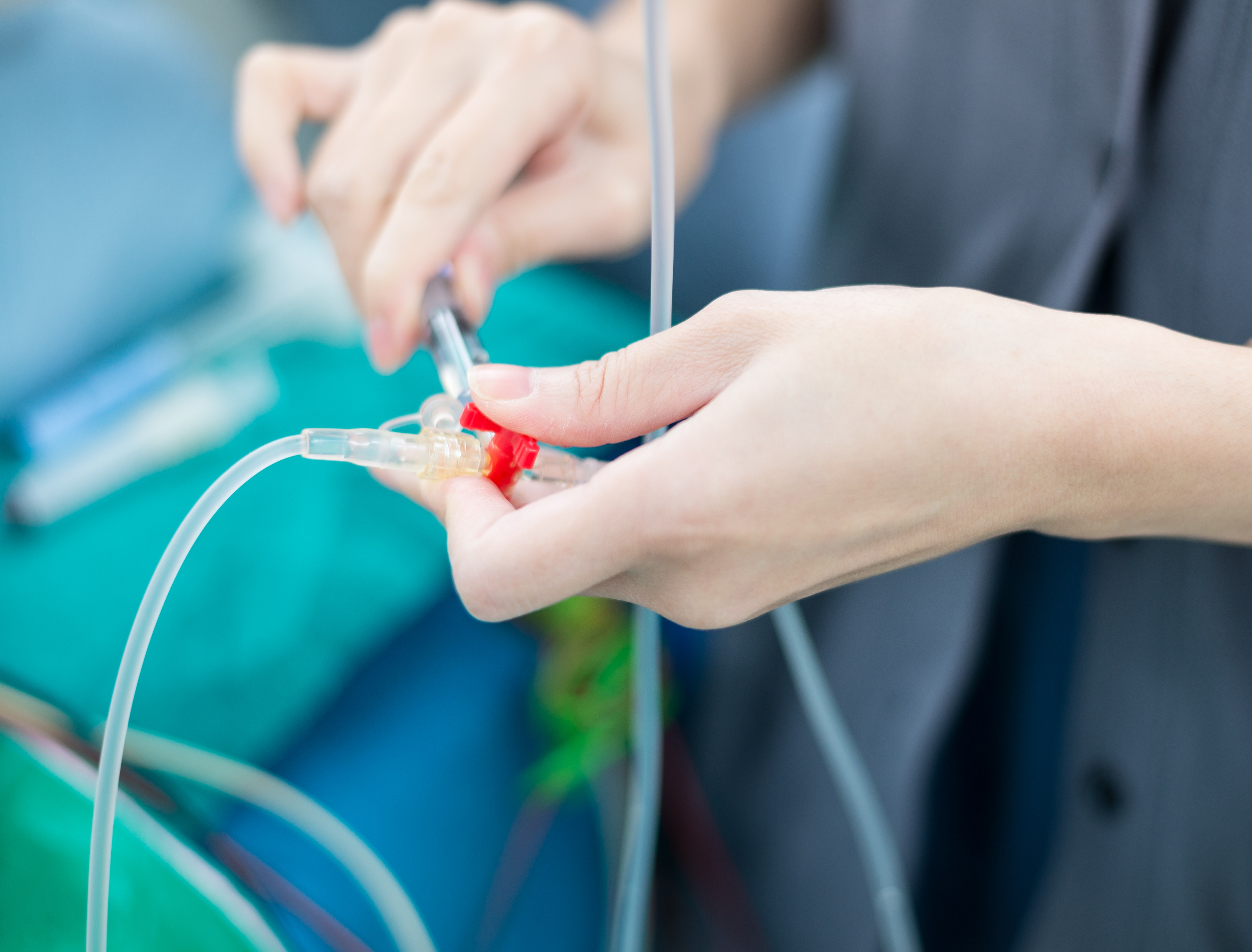A thinking caused by a wake -up period
Author:Anesthesia MedicalGroup Time:2022.09.24
In the process of clinical anesthesia, everyone must often encounter the irritability of patients after extracting, and even get up to hit people. In the face of these dangerous actions, we cannot give sedatives or binding. The main contradictions, making some pre -processing based on these reasons, may get good results, so that patients can comfortably pass the perioperative period, which is also a necessary job for our anesthesiologist.

(Photo provider: Nurse Zhang Jing)
Let's do a complete combing of this often encountered problem, so that it has some inspiration to everyone's clinical work. First look at a real case. Maybe after reading this article, you have a clear answer in your hearts.
Patients, men, 52kg, 156cm, 63 years old, came to this hospital for laryngeal cancer at 2021-05-08, and did a whole laryngeal root treatment, cervical lymph nodes cleansing+thyroid right leaf+gorge resection+left leaf part partial division surgery Essence This time, due to the diagnosis of the left lower lung occupation, the root treatment of the lung cancer under the thoracoscopy was performed.
Anesthesia process: thoracic blocked: Patient's prone position, giving 0.375%Luojiakin 20ml beside the fourth thoracic vertebra. Induced medication: 10mg of dexamethasone, 50mg of Lidyaine, 0.1mg of fennini, 100mg of propyphenols, 35mg of Rocobradonium, intubation: No. 8 single tube+9 blocking device. Maintenance: propyolol+Refenne. In the operation, Fenti was given a total of 0.2 mg, Rockella ammonium 25mg, and Kaifen 100mg was given to Kaifen 30 minutes before the operation. Surgery 09: 45-13: 01. Solid amount: balance liquid 1500ml. Bleeding 20ml and a urine amount of 150ml. Patients can cooperate with their eyes in about 3 minutes in the recovery room. The breathing has been recovered, but some struggles can remove the tracheal ducts and communicate with the patient normally. Urcetes were stimulated and then returned to the ward.

Let's first understand the normal awakening:
Awakening refers to the gradual recovery of patients' consciousness after stopping anesthetic and auxiliary drugs at the end of the surgery. Most patients can transition from surgical anesthesia to a sober state with complete protective reflex [1]. After waking up in the operating room, patients are usually after the patient's extubation and self -breathing, sufficient oxygen and ventilation, stable blood flow dynamics, and being awakened to follow simple verbal instructions (such as opening your eyes or shaking hands)) , Transferred to PACU.
Most patients have a sufficient consciousness within about 15 minutes after extracting (ie, soberness and knowing the surrounding environment and identity), and all patients should respond within 60 minutes after giving any sedatives, opioids or anesthesia. [2 -4]. However, the time to restore consciousness varies from person to person, depending on: the specific use of anesthesia and analgesic drugs, including the dosage, duration and distance of the last administration; Essence Evidence also shows that consciousness recovery and loss of consciousness are different processes in the brain, and conscious recovery part depends on external and internal stimuli [5-7].
There are often short -term restlessness in the wake -up period of general anesthesia. During the early stages of anesthesia, patients may have restlessness, excessive excitement, desertation, crying, irritability and unclear consciousness [8-11]. The terms describing this stage include excitement, restlessness, and delirium in awakening. The awakening phase during this operation is often very short (a few minutes), and it usually subsides quickly after eliminating harmful stimuli (such as the intra -tracheal duct).

Severe restlessness-patients during the wake-up period may occur in the delirium phase (stage II) of the whole body anesthesia [12-15]. During the wake -up of the operating room, 19%of adult patients may have such a brief restlessness, depending on the evaluation standard [13,15]. Some patients will be extremely restless, accompanied by severe struggle [16]. Although this stage is usually extremely short (several minutes), the patient's severe struggle may endanger the new stitching wounds, orthopedic fixation, vascular transplant, drainage tube, or internal catheter in the vascular. Essence In addition, the sympathetic nerve excitement of restless patients can lead to severe tachycardia and hypertension. The restlessness during the awakening period is generally caused by the bad stimulus caused by ETT, which will immediately improve after the trachea pulse tube. If the patient is still restless after extract, it should be further evaluated and treated before leaving the operating room.
Common reasons include:
● Anxiety and desertification caused by residual anesthetics or auxiliary drugs.
● No pain or other discomfort caused by controlling surgery, such as urine retention, intestinal flatulence, and excessive dressing.
● Difficulty of respiratory and breathing distress. The impact of the NMBA residual effect is particularly great, which can cause muscle weakness, causing dyspnea and uncoordinated shooting action (may be similar to restlessness).
● Premium oxygenia or hyperbarbonate.

The treatment method includes — for treatment, while comforting patients and re -fixed positions. Some patients can receive drugs in awakening before leaving the operating room, such as giving small doses of opioids for pain; or severe anxiety and restlessness of patients with short -acting benzine or fluoropiciditol for patients with no pain. [ 17]. However, if the cause of the suspicion is hypoxemia, hypertonate, hypoglycemia or hypotension, it should not be given analgesic, anxiety or sedative drugs.
High -reactive delirium manifestations of restlessness, excessive excitement, desertation, crying, irritability, and blurred consciousness may sometimes become obvious after waking up for a while, or the initial treatment or repeated occurrence of early after surgery. Evaluation and treatment -other reasons for excessive delirium in the wake -up activity include: acute pain or other discomfort caused by surgery (such as bladder swelling), or dyspnea caused by residual neurotomy blockage and respiratory distress.
The initial management of the delirium and/or restlessness in the wake -up period includes:
● Comfort and re -directional
● Treatment of acute pain, but because opioids may induce delirium, it is necessary to closely monitor the clinical effect after each opioid drug is given [17,18]. If non -opioid drugs and methods are valid, they should be the first choice.
● Treatment of other discomfort (bladder expansion, low body temperature).
● Carry out laboratory examinations to determine whether there are hypoxemia, hypertonate, hypoglycemia or electrolyte disorders.
● Considering the residual effects of certain anesthesia, such as benzodiazine, opioids, east vascoline, or phenylphenyramine.
• Right Metomine-Partial studies show that giving right Metomidi during the operation can reduce or reduce the active excessive delirium [19-23]. In 2022, a Meta analysis incorporated a random test on non -heart and non -nervous system surgery (2676 patients; 33 studies). As a result, compared with the placebo group, the wake -up period of the right Metomi fixed group was used during the operation. The incidence of restlessness (RR 0.38, 95%CI 0.29-0.52) [23]. In addition, there is clinical pain in the right Metomi fixed group (RR 0.50, 95%CI 0.32-0.80), nausea and vomiting (RR 0.54, 95%CI 0.33-0.86), Cold War (RR 0.24, 95%CI 0.12) -0.49) and cough (RR 0.69, 95%CI 0.61-0.79) are low. However, the right Metomi fixed group is more likely to have PACU hypotension (RR 5.39, 95%CI 1.12-5.89) [23]. In addition, the duration of the right Mito Metomi fixed tube is slightly delayed (the average difference is 1 minute, 95%CI 0.32-1.68 minutes), but the time for the PACU has not been delayed. We do not conventional use of right Metomi to minimize the restlessness during the awakening period, because the risk of hypotension increases and the awakening time is slightly delayed, but during the airway or other surgery, we may choose the medicine to minimize the cough after surgery.
• ketamine-although the psychological side effects of ketamine can be manifested as the obedience period (for example, hallucinations, nightmares, vivid dreams), this phenomenon does not necessarily exist [24-28]. We will not use benzodiazoic drugs before surgery, because this is a risk factor for the rehabilitation room. [29]
● Consider abuse of preoperative substances (such as alcohol, benal, cocaine, marijuana). If this situation is suspected, toxin screening can provide useful information.
● Considering other drug poisoning, including drugs that can cause 5-hydroxyamine syndrome.
For patients with severe restless PACU, after treating reversible delirium causes, if you change the focus and re-directional failure, you can give a small dose (such as 0.5-2mg), and the dose can be repeatedly given (the total dosage is the most, the most dosage is the most, and the most dosage can be repeatedly. About 5mg). Since the fluoroprimol does not worsen the overall disease of the delirium, we tend to use the drug instead of benzodiazoic drugs to sedate the severe restless patients who constitute them or others.

However, it is not recommended to prevent the use of fluoroprine to prevent delirium. The Beers standard lists anti -psychiatric drugs as drugs that the elderly should avoid. A multi -center study randomly divided the internal medicine and surgery patients over 70 years of age to fluoropylinol or placebo. These patients also accepted non -drug strategies to prevent delirium [30]. There is no difference in the incidence, duration, or severity. Similarly, other anti-psychiatric drugs (typical or atypical) have not changed the occurrence rate, duration or severity of the delirium occurrence, duration or severity of general internal medicine or postoperative hazardous patients, and may bring harm [31-33].
If the delirium is severe and continuously exist, it is necessary to ask the Department of Neuroscience, and acute intracranial events (such as stroke) are the rare cause. The delirium that lasts for several hours or days is related to the following aspects: older, preoperative cognitive dysfunction, drinking, severe physical diseases and specific laboratory examination abnormalities (such as sodium or glucose level) [34-39]. When the PACU is out of PACU, the persistence delirium after the operation of the late surgery is worse than patients with no complications, such as death, extension of hospitalization, extension of hospitalization, and transferring to other care institutions after discharge [40].
Author: Zhang Ziyin Guangzhou University of Traditional Chinese Medicine First Affiliated Hospital
references
1.BROWN EN, Lydic R, Schiff nd. General Anesthesia, Sleep, and Coma. N English J Med 2010; 363: 2638.
2.Zelcer J, Wells DG. Anaesthetic-related recovery room complications. Anaesth Intensive Care 1987; 15:168.3.Frost EA. Differential diagnosis of delayed awakening from general anesthesia: a review. Middle East J Anaesthesiol 2014; 22:537.
4PAVLIN DJ, RAPP SE, POLISSAR NL, Et Al. Factors Affecting Discharge Time in Adult Outpatients. ANESTH Analg 1998; 87: 816.
5.engbers F. Isconsciousness Simply the Reverse of Consciousness? Anaesthesia 2018; 73: 6.
6. Pandit jj. Monitoring (un) consciousness: The Implications of a New Definition of 'Anaesthesia'. Anaesthesia 2014; 69: 801.
7.jung ys, paik h, min sh, et al. Calling the patient's own name facilities recovery from general anaesthesia: a randomised double-black trial. Anaesthesia 2017; 72: 197.
8.heWer Cl. The Stages and Signs of General Anaesthesia. Brmed j 1937; 2: 274.
9.Card E, Pandharipande P, TOMES C, et al. Emergeence from General Anaesthesia and Evolution of Delirium Signs in the Post-Anaesthesia Care Unit. <
10.Guenther U, RIDEL L, Radtke FM. Patients Prone for PostOperative Delirium: Preoperative Assessment, PerioPerate Prophylaxis, PostOperate Treatment. Cur Opin ANAESTHESILESIL 2016;
11.munk L, Andersen G, Møller am. Post -anaesthetic Emergence Delirium in Adults: Incidence, Predictors and Consequences. Acta AnaesthesiSiol Scand 2016; 60: 1059. 1059. 1059. 1059. 1059.
12.heWer Cl. The Stages and Signs of General Anaesthesia. Brmed j 1937; 2: 274.
13.Card E, Pandharipande P, TOMES C, ET Al. Emergeence from General Anaesthesia and Evolution of Delirium Signs in the Post-Anaesthesia Care Unit.
14.Guenther U, Riedel L, Radtke FM. Patients prone for postoperative delirium: preoperative assessment, perioperative prophylaxis, postoperative treatment. Curr Opin Anaesthesiol 2016; 29:384.15.Munk L, Andersen G, Møller AM. Post-anaesthetic emergence delirium in Adults: Incidence, Predictors and Consequences. Acta Anaesthesiol Scand 2016; 60: 1059.
16.carvalho dz, townley ra, burkle cm, et al. Propofol Frenzy: Clinical Spectrum in 3 Patients. Mayo Clin ProC 2017; 92: 1682 .682.
17.Card E, Pandharipande P, TOMES C, ET Al. Emergeence from General Anaesthesia and Evolution of Delirium Signs in the Post-Anaesthesia Care Unit. Br J Anaesth 2015; 115: 411.
18. Lawlor PG, Gagnon B, Mancini Il, et al. Occurrence, causes, and outcom of delirium in Patients with Advanced Cancer: A Prospective Study. Arch Intern Med 2000; 1660: 786.
19.aouad Mt, Zeni C, Al Nawwar R, et al. Dexmedetomidine for Improved Quality of Emergeence from General ANESTHESIA: a Dose-Finding Study. ANESTH Analg 2017. ANESTH Analg 2017.
20. Kim Sy, Kim JM, Lee Jh, Et Al. Effical of intraoperative dexmedetomidine infusion on emitation and question of recovery after surgery. Br J ANAESTH 2013; 11: 22; 22;
21. Kim dj, kim sh, so ky, jung kt. Effects of dexmedetomidine on smoooth emooth emitsisia in elderly patients undergopaedic sunsiSICE15: 55 :5: 5: 5:
22.Duan X, Coburn M, Rossaint R, et al. Efficacy of perioperative dexmedetomidine on postoperative delirium: systematic review and meta-analysis with trial sequential analysis of randomised controlled trials. Br J Anaesth 2018; 121:384.
23.Sin JCK, Tabah A, Campher MJJ, et al. The Effect of Dexmedetomidine on Postanesthesia Care Unit Discharge and Recovery: A Systematic Review and Meta-Analysis. Anesth Analg 2022; 134:1229.24.Bowdle TA, Radant AD, Cowley DS , et al. PsycheDelic Effects of Ketamine in Healthy Volunteers: Relationship to Steady-State Plasma Concentrations. ANESTHESIOLOGY 1998; 88:82.
25.Kleinloog D, Uit den Boogaard A, Dahan A, et al. Optimizing the glutamatergic challenge model for psychosis, using S+ -ketamine to induce psychomimetic symptoms in healthy volunteers. J Psychopharmacol 2015; 29:401.
26.Grace RF. The Effect of Variable-Dose Diazepam on Dreaming and Emergence Phenomena in 400 Cases of Ketamine-FENTANYL ANAESTHESIA 2003; 58: 904.
27.Avidan MS, Maybrier HR, Abdallah AB, et al. Intraoperative ketamine for prevention of postoperative delirium or pain after major surgery in older adults: an international, multicentre, double-blind, randomised clinical trial. Lancet 2017; 390:267.
28.Highland KB, Soumoff AA, Spinks EA, et al. Ketamine Administration During Hospitalization Is Not Associated With Posttraumatic Stress Disorder Outcomes in Military Combat Casualties: A Matched Cohort Study. Anesth Analg 2020; 130:402.
29.Maurice-SZARSKI A, Auquier P, VIARRE-ORAL V, ET AL. EFFECT of Sedative Pre-Patient Experience after general anesthesia: A randomized clinical trial.
30.Schrijver EJM, de Vries OJ, van de Ven PM, et al. Haloperidol versus placebo for delirium prevention in acutely hospitalised older at risk patients: a multi-centre double-blind randomised controlled clinical trial. Age Ageing 2018; 47:48 Then, then, then
31.Neufeld KJ, Yue J, Robinson TN, et al. Antipsychotic Medication for Prevention and Treatment of Delirium in Hospitalized Adults: A Systematic Review and Meta-Analysis. J Am Geriatr Soc 2016; 64:705.32.Girard TD, Exline MC, Carson SS, et al. Haloperidol and Ziprasidone for Treatment of Delirium in Critical Illness. N English J Med 2018; 379: 2506.
33.Boncyk CS, Farrin E, Stollings JL, et al. Pharmacologic Management of Intensive Care Unit Delirium: Clinical Prescribing Practices and Outcomes in More Than 8500 Patient Encounters. Anesth Analg 2021; 133:713.
34.American Geriatrics Society Expert Panel on Postoperative Delirium in Older Adults. Postoperative delirium in older adults: best practice statement from the American Geriatrics Society. J Am Coll Surg 2015; 220:136.
35.Bitsch M, Foss N, Kristensen B, Kehlet H. Pathogenesis of and Management Strategies for Postoperative Delirium after Fraction: A Review. Acta Orthop Scand 2004; 75: 378.
36.Scholz AF, Oldroyd C, McCarthy K, et al. Systematic review and meta-analysis of risk factors for postoperative delirium among older patients undergoing gastrointestinal surgery. Br J Surg 2016; 103:e21.
37.WhitLock el, vannucci a, avidan ms. PostOperative delirium. Minerva AneesteSiol 2011; 77: 448.
38.Dasgupta M, Dumbrell AC. Preoperative Risk Assessment for Delirium after Noncardiac Surgery: a Systematic Review. J am GerIiatr Soc 2006; 54: 1578.
39.zaal IJ, DEVLIN JW, Pelen LM, Slooter Aj. A Systematic Review of Risk Factors for Delirium in the ICU. Crit Care Med 2015; 43:40.
40.Sharma Pt, Sieber Fe, Zakriya KJ, et al. Recovery Room Delirium Predoterative Delirium after-Fracture Repair. ANESTH ANALG 2005; 101: 1215.
[Reminder] Pay attention, there are a large number of professional science sciences here to reveal those things about surgical anesthesia ~
- END -
Local infection +1!The risk of overflowing risks in the society involved in the school in Beijing is generally controllable

On September 15th, at the 402 press conference of the prevention and control of th...
Call: Have you ever experienced "humiliated" experience?

Have you ever had an experience of being humiliated? —— Use some means (such as ...